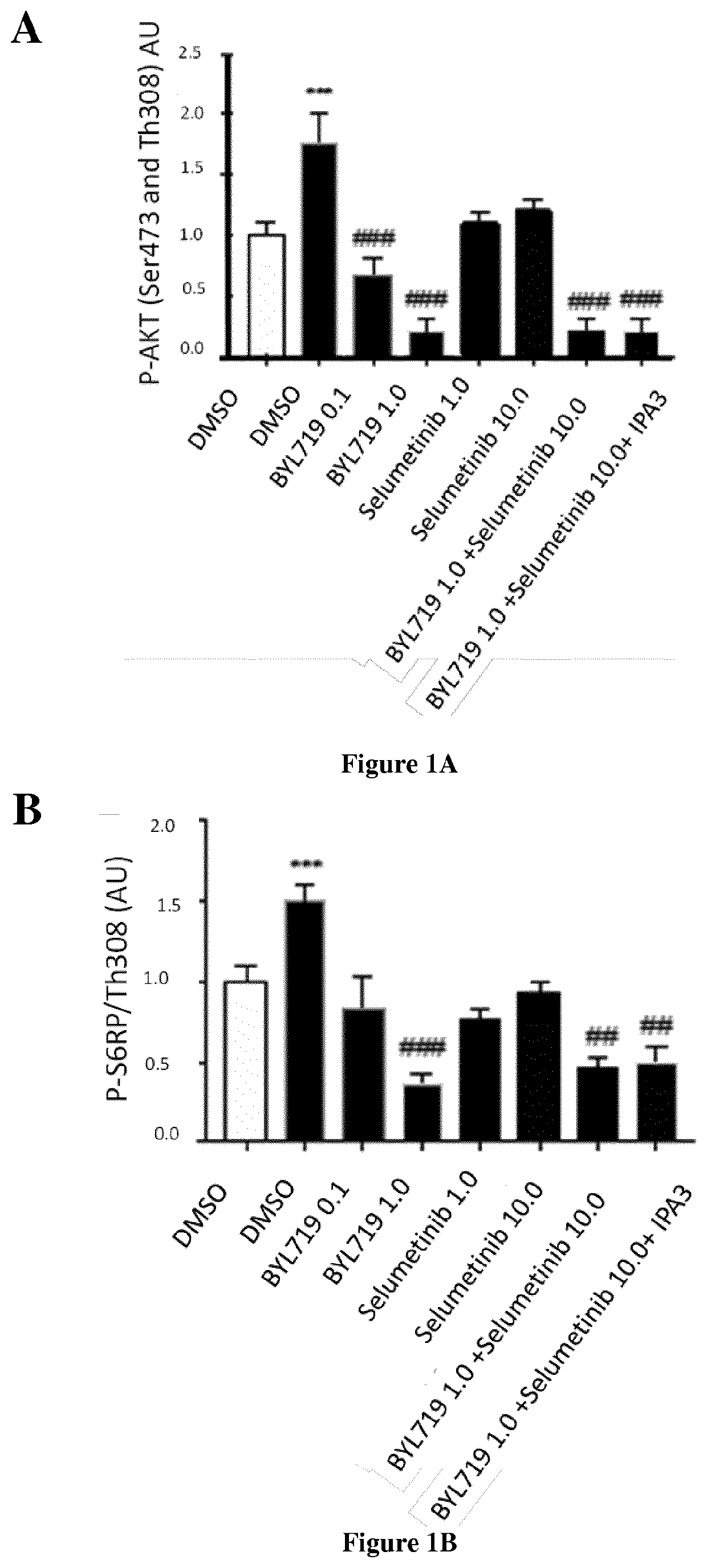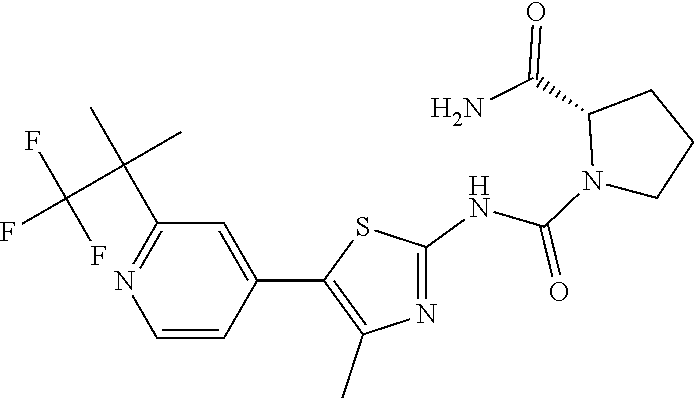Methods for the treatment of neurofibromatosis
a neurofibromatosis and treatment method technology, applied in the field of neurofibromatosis treatment, can solve the problems of untreatable, uncontrollable growth and division, and reduced vision or total vision loss,
- Summary
- Abstract
- Description
- Claims
- Application Information
AI Technical Summary
Benefits of technology
Problems solved by technology
Method used
Image
Examples
example
[0087]Inventors first checked in immortalized NF1− / − cells if the PIK3CA pathway was recruited (FIGS. 1A, 1B and 1C). Western blot analysis revealed that compared to WT cells, NF1− / − cells had a greater phosphorylation of AKT on both residues, Th308 and Ser473, demonstrating the spontaneous recruitment of the pathway (n=3). They then treated the cells with BYL719. After 12 h of exposure they observed that BYL719 was efficiently blocking the phosphorylation of AKT and S6RP (FIGS. 1A and 1B). PIK3CA pharmacological inhibition was associated with increased apoptosis as assessed by PARP cleavage in a dose dependent manner (FIG. 1C). They then exposed the NF1− / − cells to different dose of selumetinib, a MAP kinase inhibitor, drug that gave encouraging results in some patients with neurofibromatosis. Interestingly they observed that selumetinib induced apoptosis in a dose dependent manner but to a lower extent compared to BYL719. Based on these results, they decided to expose NF1− / − cells...
PUM
 Login to View More
Login to View More Abstract
Description
Claims
Application Information
 Login to View More
Login to View More - R&D
- Intellectual Property
- Life Sciences
- Materials
- Tech Scout
- Unparalleled Data Quality
- Higher Quality Content
- 60% Fewer Hallucinations
Browse by: Latest US Patents, China's latest patents, Technical Efficacy Thesaurus, Application Domain, Technology Topic, Popular Technical Reports.
© 2025 PatSnap. All rights reserved.Legal|Privacy policy|Modern Slavery Act Transparency Statement|Sitemap|About US| Contact US: help@patsnap.com



